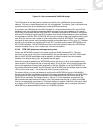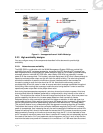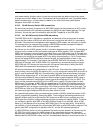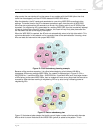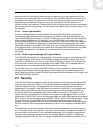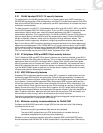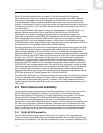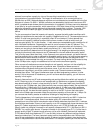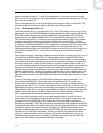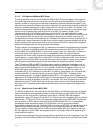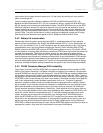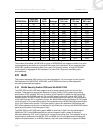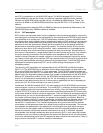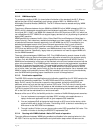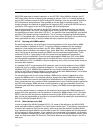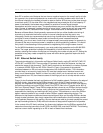
Voice over Wireless LAN Solution Guide v1.0 December 2005
______________________________________________________________________________________________________
Page 33
particular handset that uses G.711 and 20 ms packetization, you can get a maximum of eight
calls on an AP. By just switching to 30 ms packetization on the same exact devices, you can now
get 10 calls on the same AP.
Given all the dependencies, it can be challenging to find the exact number of calls per AP. The
sections that follow provide device-specific information and scaling numbers.
2.4.1.1 WLAN Handset 2210/11/12
The WLAN Handset 2210/11/12 supports both G.711 and G.729 codecs, but only using a 30 ms
packetization rate. The WTM 2245 translates between packetization rates, meaning that from the
WTM 2245 to other device the call uses the packetization rate specified by the CS 1000 (for
example, 20 ms). The WLAN Handset 2210/11/12 encapsulates its voice payloads in SVP for
QoS. WLAN Handset 2210/11/12 further synchronizes communications such that the handsets
are able to avoid collisions with each other more effectively than the usual 802.11 collision
avoidance mechanisms. Each handset maintains a list of up to four APs as potential candidates
for roaming. The WLAN Handset 2210/11/12 is aggressive in roaming to other APs, which tends
to prevent it using a suboptimal data rate when another AP can provide better service. The
handsets also communicate to the WTM 2245 and discover which APs are at full call capacity, so
that the WLAN Handset 2210/11/12 can direct its call through an AP that has call capacity
available.
Under optimal conditions, meaning no interference and all devices in proximity of the AP, up to 10
voice calls from a WLAN Handset 2210/11/12 can be supported on a single AP 2330. When
configuring the maximum call parameter of a WTM 2245, never set it above 10. A more realistic
rule of thumb that allows for devices to move about and rate scale accordingly is anywhere from
six to eight calls per AP. A noisy RF environment can impact the numbers further as well. Or, if
you want to allow data devices to have some amount of guaranteed bandwidth, you can lower the
maximum voice calls per AP to keep voice calls from consuming all available throughput. For
example, limiting the maximum calls per AP to seven allows data traffic to in essence reserve 30
percent of media capacity. Likewise if the network supports other non-221x handset calls on the
802.11b network, then you must leave adequate capacity for those calls too. Note that the call
admission control function of the WTM 2245 cannot serve to limit those other voice calls on a per-
AP basis.
There is an alternative control on the WTM 2245 that affects call capacity across APs. This
control allows the WTM 2245 to fix the data rates that handsets will use. The options are
Automatic and 1 Mb/2 Mb only. When you choose the latter, maximum call capacity drops by
slightly more than half if G.711 is in use, or by slightly more than two-thirds if G.729 is in use. The
advantage of this option is that most of the variability of call capacity is removed as rate scaling
effects are eliminated. So you can get more predictable call capacity at the expense of maximum
number of calls under optimum conditions. Note that with this option enabled, throughput for
802.11b data devices will be severely impacted by even one or two voice calls.
Or, you can use the automatic option to have higher potential capacity, but with the risk of
occasionally being oversubscribed under the worst conditions. For example, if eight calls is the
configured limit on the WTM 2245, and if all eight calls are from handsets on the edge of
coverage, the cell is oversubscribed. On the other hand, if five calls is the configured limit and
handsets are restricted to 1 Mb/2 Mb, then capacity is wasted when most handsets are close that
could otherwise be used by other data devices. If you want this type of predictability, it is probably
preferable to engineer the maximum calls per AP based on 1 Mb/2 Mb rate selections in the
handsets, set that number as the call limit on the WTM 2245, and then set the actual rate of the
handsets (on the WTM 2245) to Automatic. That way, the WLAN is engineered for the worst
case, but in optimal conditions, more throughput is left over for other devices to use, due to
handsets using higher data rates. In summary, you should never actually use the 1 Mb/2 Mb
option, even if the network is engineered to that type of coverage.



